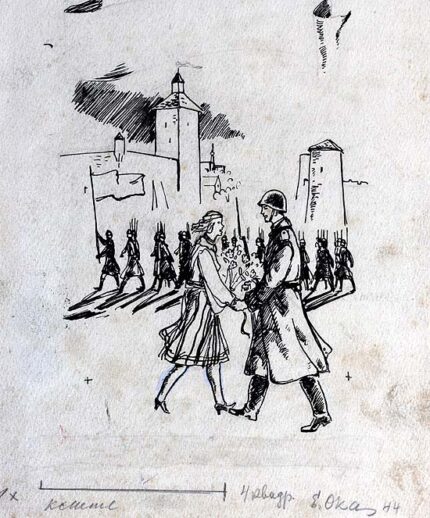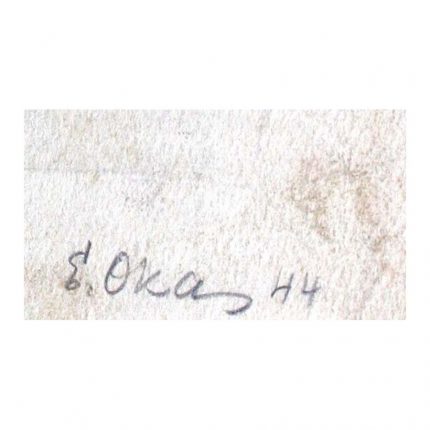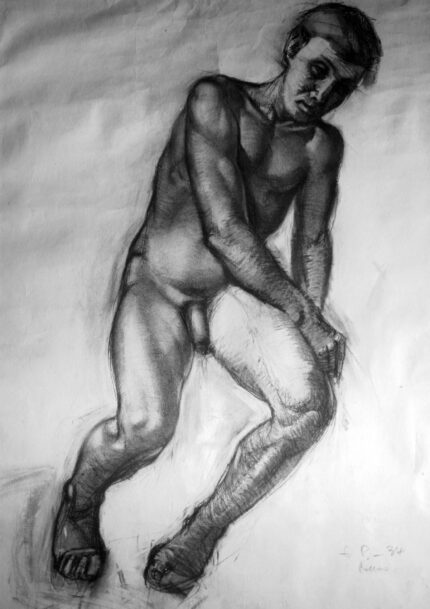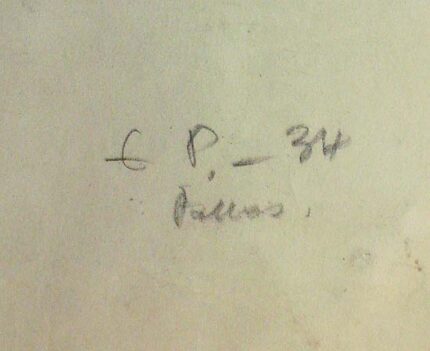Priidu Aavik (1905 – 1991). In the harbor of Prangli Island. (1980)
€800
Grey felt-tip pen, paper
44 x 60 cm
Bottom right – PA Pranglis 80.
Priidu Aavik was born as the fifth child in a family of nine children of school teacher Eduard Aavik.
At the age of 17, he moved to Tallinn, where he worked and studied at Ants Laikmaa’s studio school.
In 1934, Aavik entered the Pallas Art College (Tartu), where he studied under Nikolai Triik and Ado Vabbe until graduating in 1938. He then moved to Tallinn, where he established his own studio.
In 1944, he traveled to Paris to continue his studies, but was forced to return when the war broke out.
After returning to Estonia, he worked as the temporary acting director of the Tartu State Art Institute in 1944–1946, as the chairman of the board of the Estonian Union of Soviet Artists in 1945–1947, and as the chairman of the Tallinn Art Foundation in 1947–1948. In 1951–1953 he was the chief artist of the Estonian pavilion at the All-Union Agricultural Exhibition and in 1954–1962 he was the chief artist of the Estonian SSR National Economic Exhibition.
His work mainly includes historical, landscape and environmental paintings (mostly on the themes of fishing life). He participated in a creative trip on a fishing trawler in 1942–1943 in the Norwegian Sea and in 1944–1945 in the Atlantic Ocean and Nigeria. In the summer he loved to paint the life and landscapes of coastal fishermen in Prangli. He began to appear at exhibitions starting from the Pallas Art School graduates’ exhibition held in Tartu in 1938.
Priidu Aavik was married to Helmi Trei, the sister of artist Salome Trei.
| Dimensions | 44 × 60 cm |
|---|
Grey felt-tip pen, paper
44 x 60 cm
Bottom right – PA Pranglis 80.
Priidu Aavik was born as the fifth child in a family of nine children of school teacher Eduard Aavik.
At the age of 17, he moved to Tallinn, where he worked and studied at Ants Laikmaa’s studio school.
In 1934, Aavik entered the Pallas Art College (Tartu), where he studied under Nikolai Triik and Ado Vabbe until graduating in 1938. He then moved to Tallinn, where he established his own studio.
In 1944, he traveled to Paris to continue his studies, but was forced to return when the war broke out.
After returning to Estonia, he worked as the temporary acting director of the Tartu State Art Institute in 1944–1946, as the chairman of the board of the Estonian Union of Soviet Artists in 1945–1947, and as the chairman of the Tallinn Art Foundation in 1947–1948. In 1951–1953 he was the chief artist of the Estonian pavilion at the All-Union Agricultural Exhibition and in 1954–1962 he was the chief artist of the Estonian SSR National Economic Exhibition.
His work mainly includes historical, landscape and environmental paintings (mostly on the themes of fishing life). He participated in a creative trip on a fishing trawler in 1942–1943 in the Norwegian Sea and in 1944–1945 in the Atlantic Ocean and Nigeria. In the summer he loved to paint the life and landscapes of coastal fishermen in Prangli. He began to appear at exhibitions starting from the Pallas Art School graduates’ exhibition held in Tartu in 1938.
Priidu Aavik was married to Helmi Trei, the sister of artist Salome Trei.















